Commercial, Distributed Energy Resources, Energy Efficiency, Energy Storage, GHG Emissions, Industrial, Microgrids - October 9, 2020
Virtual Distributed Energy Forum Wrap-Up
Smart Energy Decisions' Virtual Distributed Energy Forum, presented on September 21-25, was designed to accelerate the adoption of distributed energy resources, meeting the needs of large electric power users with a mix of educational sessions, innovative case studies, and connecting corporate buyers and suppliers to advance meaningful conversations and mutual success.
Noting a theme of the event, “Virtual Collaboration Drives Success,” John Failla, Founder and Editorial Director of Smart Energy Decisions said that, whether physical or virtual, Smart Energy Decision events “have a collaboration-based culture that permeates everything we do.”
The following are brief highlights from the Virtual Distributed Energy Forum. More extensive coverage will follow in our VDEF Insights report, available in November.
“Achieving Energy Independence in Manufacturing”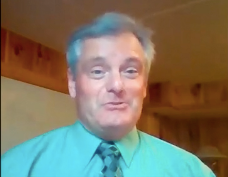 How did Procter & Gamble convert its energy-intensive Mehoopany plant to a local supply chain via natural gas found under the facility - and save tens of millions of dollars a year? “This was a unique opportunity where we could significantly improve our cost structure, become more energy efficient, and actually reduce some of our environmental footprint from the plant,” explained Alex Fried, Senior Purchasing Manager/Global Energy Purchases. Fried credited support from leadership in moving the project forward: “They got it, as long as we scaled it right and did it in a way that fits in with our capabilities.”
How did Procter & Gamble convert its energy-intensive Mehoopany plant to a local supply chain via natural gas found under the facility - and save tens of millions of dollars a year? “This was a unique opportunity where we could significantly improve our cost structure, become more energy efficient, and actually reduce some of our environmental footprint from the plant,” explained Alex Fried, Senior Purchasing Manager/Global Energy Purchases. Fried credited support from leadership in moving the project forward: “They got it, as long as we scaled it right and did it in a way that fits in with our capabilities.”
“Powering Philadelphia’s Future”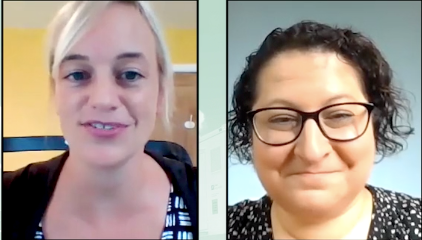 “We know in Philadelphia that climate change is already having an impact on our communities and we know that those impacts are not equitably distributed,” explained Christine Knapp (left photo), Director, Office of Sustainability, City of Philadelphia. "Low-income communities and communities are color are being hit hardest. We look at our climate work through the lens of environmental and climate justice. Climate change can be a risk multiplier for those populations but by addressing it, climate change can also be a multiplier of opportunities."
“We know in Philadelphia that climate change is already having an impact on our communities and we know that those impacts are not equitably distributed,” explained Christine Knapp (left photo), Director, Office of Sustainability, City of Philadelphia. "Low-income communities and communities are color are being hit hardest. We look at our climate work through the lens of environmental and climate justice. Climate change can be a risk multiplier for those populations but by addressing it, climate change can also be a multiplier of opportunities."
The Philadelphia Energy Authority focuses on two metrics: energy burden and energy insecurity. “We view our job as using energy as a tool for impact across economic development, job creation, poverty alleviation, and improving public health,” said Emily Schapira (right photo), Executive Director. “We look at all the goals set for the city and see how we can help influence those through energy.”
“The Future of the Grid is Distributed”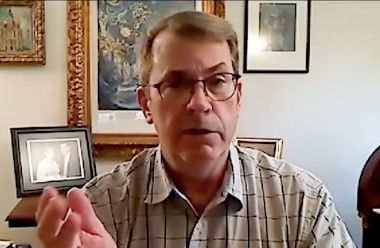 Explaining the session title, Doug Sansom, Director, DER Sales, NRG, said that distributed energy resources are essential for success “because customers want control over the cost of energy. They also want reliability and they want choice. Access to cost-efficient energy is a business necessity. These reasons, combined with new lower-cost technology, are driving capital spending for DERs.” Sansom cited a recent report predicting DER capacity to reach 387 GW by 2025 driven by $110 billion investment in battery storage, EV infrastructure, and grid-interactive appliance sales.
Explaining the session title, Doug Sansom, Director, DER Sales, NRG, said that distributed energy resources are essential for success “because customers want control over the cost of energy. They also want reliability and they want choice. Access to cost-efficient energy is a business necessity. These reasons, combined with new lower-cost technology, are driving capital spending for DERs.” Sansom cited a recent report predicting DER capacity to reach 387 GW by 2025 driven by $110 billion investment in battery storage, EV infrastructure, and grid-interactive appliance sales.
“Philadelphia Update”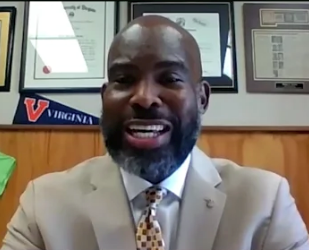 Derek S Green, Councilmember At-Large, City of Philadelphia, updated attendees on the role his city is playing to advance a state-wide energy transition. “In Pennsylvania, we didn’t have the best track record but in the past number of years we’ve been able to move the needle forward with solar projects in Philadelphia.” Noting changes brought about by the COVID pandemic, he said, “We have to be conscious of how we move forward with new types of energy but also of how it affects our ratepayers and our constituents in the city.”
Derek S Green, Councilmember At-Large, City of Philadelphia, updated attendees on the role his city is playing to advance a state-wide energy transition. “In Pennsylvania, we didn’t have the best track record but in the past number of years we’ve been able to move the needle forward with solar projects in Philadelphia.” Noting changes brought about by the COVID pandemic, he said, “We have to be conscious of how we move forward with new types of energy but also of how it affects our ratepayers and our constituents in the city.”
“Strategies for Innovative Efficiency Financing”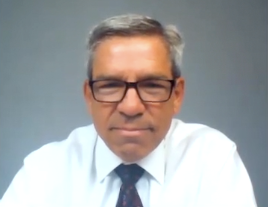 Ben Suplick, Director of Engineering and Energy Planning, University of Pennsylvania, discussed the University’s path in putting its two 100-year “century bonds” (each for $300 million) to work supporting investment in efficiency upgrades consistent with a commitment to its Climate Action Plan. Noting a goal to be 100% carbon neutral by 2042, Suplick explained, “We thought 30 years would give us enough time to get there.” Among the challenges for a campus extending across 13 million square feet and 200 buildings is “trying to operate buildings that go back to the 1800s, trying to get them to operate energy efficiently, as well as newer buildings that we are trying to design to be as energy efficient as possible.”
Ben Suplick, Director of Engineering and Energy Planning, University of Pennsylvania, discussed the University’s path in putting its two 100-year “century bonds” (each for $300 million) to work supporting investment in efficiency upgrades consistent with a commitment to its Climate Action Plan. Noting a goal to be 100% carbon neutral by 2042, Suplick explained, “We thought 30 years would give us enough time to get there.” Among the challenges for a campus extending across 13 million square feet and 200 buildings is “trying to operate buildings that go back to the 1800s, trying to get them to operate energy efficiently, as well as newer buildings that we are trying to design to be as energy efficient as possible.”
“The Impact of COVID-19 on DER Deployment”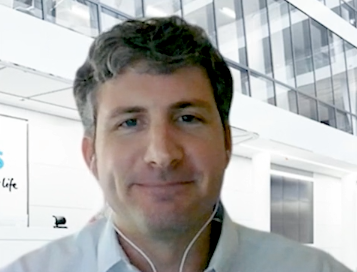 In this age of COVID, Matthew Walters, Director, Distributed Energy Systems, Siemens, warns that as customers focus on their core business, “energy can be deprioritized, which will require this industry to push forward with more innovative solutions, specifically when it comes to financing and energy-as-a-service topics.” He added, “Even if budgets have gone down, the pressure to become more sustainable and resilient has increased. That’s where innovation has to happen, to continue to meet these needs in a very dynamic environment.”
In this age of COVID, Matthew Walters, Director, Distributed Energy Systems, Siemens, warns that as customers focus on their core business, “energy can be deprioritized, which will require this industry to push forward with more innovative solutions, specifically when it comes to financing and energy-as-a-service topics.” He added, “Even if budgets have gone down, the pressure to become more sustainable and resilient has increased. That’s where innovation has to happen, to continue to meet these needs in a very dynamic environment.”
A Modular Approach to Cogen: Stacking the Blocks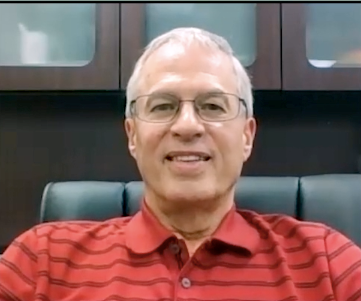 Scott Bargerstock, Global Energy and Innovation Senior Manager – Demand Side, Mohawk Industries, discussed a cogeneration program for one of the company’s ceramic tile manufacturing plants, which uses large amounts of both heat and electricity. The solution was a modular approach using 25- to 100-KW microturbines instead of one larger unit. “We looked at combined heat and power across our sites and found that the economics work best when you match your generation capacity to your thermal load," he explained. “The more of your thermal load you can use, the better the return on investment.” He added, “This plant has a load of 5-6 MW and could go up to 8-9 MW at some point.
Scott Bargerstock, Global Energy and Innovation Senior Manager – Demand Side, Mohawk Industries, discussed a cogeneration program for one of the company’s ceramic tile manufacturing plants, which uses large amounts of both heat and electricity. The solution was a modular approach using 25- to 100-KW microturbines instead of one larger unit. “We looked at combined heat and power across our sites and found that the economics work best when you match your generation capacity to your thermal load," he explained. “The more of your thermal load you can use, the better the return on investment.” He added, “This plant has a load of 5-6 MW and could go up to 8-9 MW at some point.
Inspiring Diversity in Energy: Getting from Statement to Action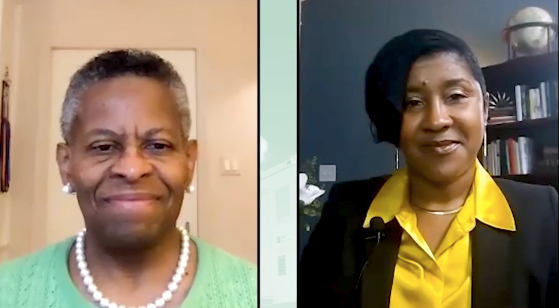 Continuing a conversation that started at last year’s Accelerate Philly event, Darlene Phillips (right), Executive Director, Operations Engineering Support, PJM, discussed changes that have occurred since that event, including the pandemic and subsequent economic downturn, as well as the rise of the Black Lives Matter movement. “When everything started happening in the February and March timeframe, a lot of companies came out with strong statements against racism. Like many organizations, we have refreshed our strategies with respect to our diversity and inclusion efforts. There seems to be more focus on how we move the ball forward within our own organization and the broader community.”
Continuing a conversation that started at last year’s Accelerate Philly event, Darlene Phillips (right), Executive Director, Operations Engineering Support, PJM, discussed changes that have occurred since that event, including the pandemic and subsequent economic downturn, as well as the rise of the Black Lives Matter movement. “When everything started happening in the February and March timeframe, a lot of companies came out with strong statements against racism. Like many organizations, we have refreshed our strategies with respect to our diversity and inclusion efforts. There seems to be more focus on how we move the ball forward within our own organization and the broader community.”
Carolyn Green (left photo), Managing Partner, EnerGreen Capital Management, LLC noted, “A lot of the empirical data say that companies are more successful when they have a diverse leadership team because people are bringing different skill sets and different perspectives to the table, which allows for better, more universally applicable decisionmaking.”
“The Future of Utility Energy Services”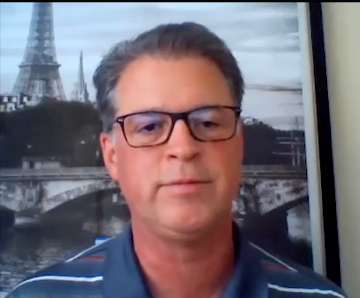 When asked about customer trends driving the market, Robert Vary, Senior Vice President of Sales and Relationship Management, Duke Energy, reported that some companies are utilizing resilience as a competitive advantage. “If you think about any type of storm or major event, if they are able to keep their power on, they can continue to serve their customers,” he explained. “If their competitors aren’t doing that, they can actually bring in new customers that might not have shopped at their facility or worked with them in the past. This allows them to provide more value and even increase the amount of business they get from their customers.”
When asked about customer trends driving the market, Robert Vary, Senior Vice President of Sales and Relationship Management, Duke Energy, reported that some companies are utilizing resilience as a competitive advantage. “If you think about any type of storm or major event, if they are able to keep their power on, they can continue to serve their customers,” he explained. “If their competitors aren’t doing that, they can actually bring in new customers that might not have shopped at their facility or worked with them in the past. This allows them to provide more value and even increase the amount of business they get from their customers.”
Smart Energy Decisions’ winter edition of the Virtual Renewable Energy Sourcing Forum is set for December 7-11. Buyers may click here for applications to attend. Suppliers may click here for sponsorship opportunities.
Stay Up-To-Date












